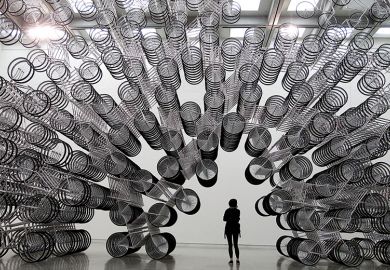Getting Medieval is not just for medievalists. A quick web search reveals that players of computer games, politicians and students - particularly in America - are getting medieval, too.
What are the discursive powers and possibilities of the medieval in postmodernity? Is it possible to escape from seeing the medieval as either the same as or different from the present? Are other kinds of relationship between past and present thinkable? How can medievalists contribute to the understanding of the present and the formation of new futures?
In her new book, categorised on the jacket as medieval studies/cultural studies/queer theory, Carolyn Dinshaw offers us her vision of Getting Medieval .
History is near the top of Dinshaw's agenda. She wants to move beyond historiography that sees the past either as the "same" as the present or as "other" - her examples include John Boswell's Christianity, Social Tolerance and Homosexuality and Michel Foucault's History of Sexuality .
Instead, she wishes to describe relations between the past and present in ways that "collapse the critical and theoretical oppositions between transhistorical and alteritist accounts". Her focus is on sexualities in late medieval England; her sources are selected literary and non-literary texts: the Twelve Conclusions of the Lollards , a heretical manifesto issued by John Wycliffe's followers; The Book of Margery Kempe , an account of the life and persecution of a pious laywoman; a record of the interrogation of a cross-dressing London prostitute; and the portraits of the wife of Bath and the pardoner in Chaucer's Canterbury Tales .
Dinshaw's readings reveal the operation of categories that normalise heterosexuality and also destabilisations of those categories. Dissatisfied with historiography grounded in paradigms of identity and alterity, in these readings she seeks alternative ways of connecting the present with medieval society in order to "extend the resources for self and community-building into even the distant past".
Dinshaw wants to use these resources to energise a coalition politics based on "community" rather than "identity": to articulate links between the causes of queer politics, academic freedom and education funding. This is "getting medieval": using the past to work for connectivity and coalition.
In theory (perhaps), we can all get medieval. In practice, though, Dinshaw seeks to recuperate the medieval within a very specific context. Her frame of reference, as her title announces, is the contemporary political and cultural scene in the United States. Dinshaw does not assume that all of her readers will be medieval specialists, but she does expect informed interest in 1990s congressional debates on humanities research funding and history teaching in American schools.
Some reflection on this cultural and political specificity seems called for, especially as in other respects Dinshaw carefully enunciates her own and her project's "situatedness". Possibly Dinshaw means to make a local intervention and wants to avoid making universalising claims. However, the mode of her intervention - publishing an academic book with an American university press that exports internationally - conflicts with any such agenda.
What other inflections of "getting medieval" might be possible? Dinshaw's very personal, highly specific and precisely targeted vision should stimulate consideration of the meanings assigned and assignable to the medieval in the postmodern world.
Wendy Scase is professor of medieval English literature, University of Birmingham.
Getting Medieval: Sexualities and Communities, Pre and Postmodern
Author - Carolyn Dinshaw
ISBN - 0 8223 2330 3 and 2365 6
Publisher - Duke University Press
Price - £12.95
Pages - 345



